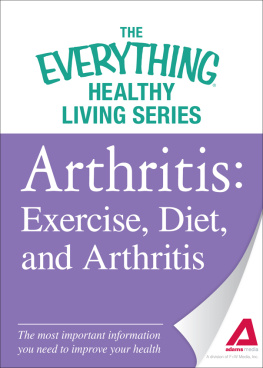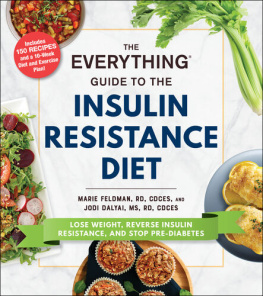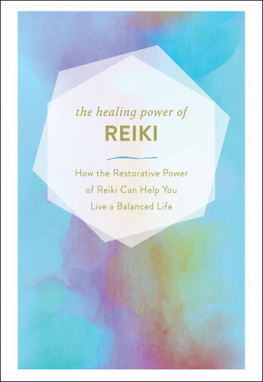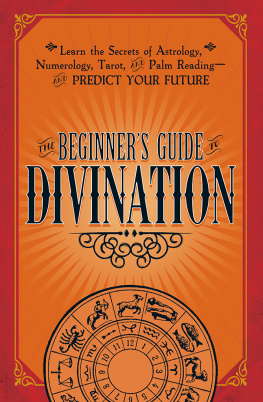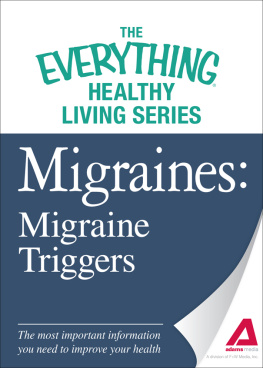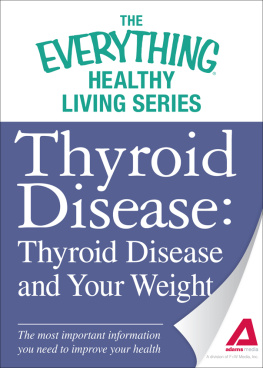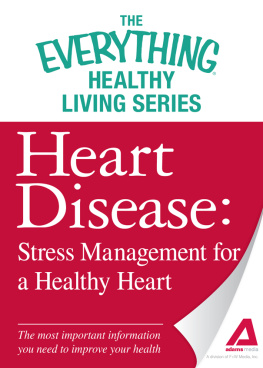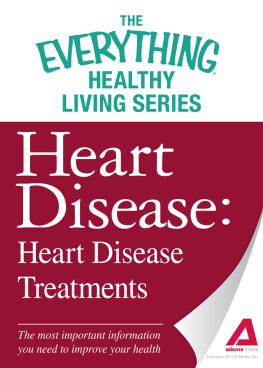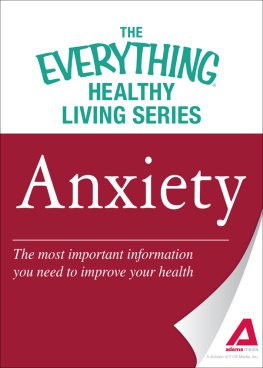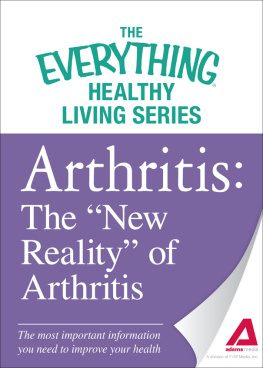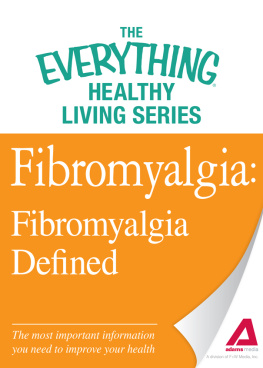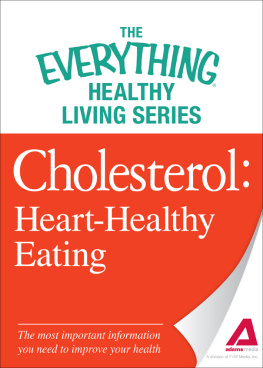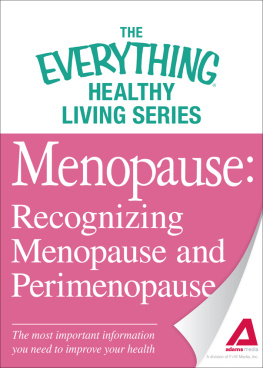Adams Media, a division of F+W Media, Inc.
For more than 10 years, millions of readers have trusted the bestselling Everything series for expert advice and important information on health topics ranging from pregnancy and postpartum care to heart health, anxiety, and diabetes. Packed with the most recent, up-to-date data, Everything health guides help you get the right diagnosis, choose the best doctor, and find the treatment options that work for you.
The Everything Healthy Living Series books are concise guides, focusing on only the essential information you need. Whether youre looking for an overview of traditional and alternative migraine treatments, advice on starting a heart-healthy lifestyle, or suggestions for finding the right medical team, theres an Everything Healthy Living Book for you.
Arthritis
It can be completely unnerving to have nothing wrong with you one day and severe pain the next day. Since pain is a somewhat common symptom associated with many different conditions, it is hard to know initially what to do or how to react to the sudden change. Not every type of arthritis develops suddenly, but that sense of confusion that builds when you accept that its not going to go away can sometimes lead you down the wrong path.
No matter what type of arthritis you have, early diagnosis and early treatment can help prevent joint damage and disability. There are many approaches to treating arthritis, both conventional and alternative. There are myriad books written on the subject. The Internet provides even more information about arthritis. It can almost be considered too much information, because a person experiencing the initial onset of arthritis symptoms often doesnt know where to begin. Should you pick up a book about osteoarthritis and learn all about it? Maybe you should choose the book about rheumatoid arthritis? Perhaps its sufficient to self-treat with over-the-counter arthritis medications? How do you know you are making the right decisions?
Choosing the right starting point can impact the course of your disease. Its imperative to be evaluated by a rheumatologist, a specialist in diagnosing and treating arthritis and related conditions. Getting an accurate diagnosis is the first step to getting proper treatment and managing the disease.
Chronic arthritis affects every aspect of daily living. This practical guide will show you how to live better with arthritis. The day you are diagnosed with arthritis is the first day of your new reality. Your new reality can overwhelm you, or you can choose to face it with courage and perseverance. Your willingness to accept your new reality and adjust and adapt to it, as well as your ability to cope and an unwillingness to give up, are all factors that will influence how well you live with arthritis.
The intent of this book is to help you learn about the disease, teach you to be your own advocate, help you make better decisions, and inspire you to realize that there is still a high quality of life after an arthritis diagnosis. The first step: Understanding that change is inevitable.
If youd like to learn more about arthritis, check out The Everything Health Guide to Arthritis , available in print (978-1-59869-410-9) and eBook (978-1-60550-230-4) formats.
Exercise Is Vital for Arthritis Patients
The importance of exercise for people living with arthritis cannot be overstated. Joint pain and muscle weakness associated with arthritic conditions can be very limiting. You may feel that exercise is secondary to coping with chronic pain, but regular exercise can yield tremendous benefits. Even when results arent visible or obvious, exercise can lessen the consequences of inactivity. Exercise should be part of a treatment plan tailored specifically for you.
Basic Principles of Exercise for Arthritis Patients
It is a common misconception that people with arthritis cannot exercise because pain associated with the disease is so restrictive. Contrary to this belief, the American College of Rheumatology and the National Institute of Arthritis and Musculoskeletal and Skin Diseases state that regular, appropriate exercise is safe and beneficial for people with arthritis. Exercise:
- Reduces joint pain and stiffness
- Increases flexibility
- Improves muscle strength
- Improves cardiac fitness and endurance
Long-term studies have confirmed that people with inflammatory forms of arthritis (such as rheumatoid arthritis) can participate in moderate-intensity, weight-bearing exercise without increasing pain or disease activity. Less bone loss and joint damage are positive outcomes that can result from exercise for inflammatory arthritis patients. For patients with osteoarthritis, a combination of aerobic and strengthening exercises can improve joint health and function, strength, balance, and coordination.
The key is for exercise to be appropriate for each individual. If you can no longer participate in high-intensity exercise such as athletics, or have to pare back recreational exercise such as distance walking, therapeutic exercise should still have a place in your daily routine. Range-of-motion exercises, strengthening exercises, and aerobic exercises are three types of exercise that are very beneficial for people with arthritis. If you havent been exercising but you are beginning to realize the importance of it, you may be wondering how to start. Start with your doctor.
Discuss your plan to begin exercising with your doctor. Your doctor can help you decide how to build an exercise regimen designed specifically for you, or you may be referred to a physical therapist or occupational therapist for an evaluation of your physical limitations that will support their recommendations. Once what exercises you should be doing has been determined, start slow and stick with it!
Range-of-Motion Exercises
Range-of-motion exercise, exactly as its name implies, takes each of your joints through their full range of normal movement. On a daily basis, range-of-motion exercises maintain normal movements, help to relieve joint stiffness, and increase flexibility. Range-of-motion exercise consists of gentle, stretching movements and can be done on land or in the water.
The Arthritis Foundation recommends that you should do range-of-motion exercise daily and build up to fifteen minutes per day. When you are able to do fifteen continuous minutes of range-of-motion exercises, you may be able to add some strengthening and aerobic exercises into your routine. Some people find it helpful to do range-of-motion exercises in the morning to quell bothersome morning stiffness.
Strengthening Exercises
People with arthritis must maintain muscle strength by exercising. Strong muscles protect your joints and also support joints weakened by arthritis. Your ability to move depends on your muscle strength.
Isometric and isotonic exercises are two types of strengthening exercises. Isometric exercises tighten the muscles without moving the joint. Isotonic exercises strengthen muscles by moving the joints.
The American College of Rheumatology suggests doing a set of eight to ten exercises (targeting each major muscle group) two to three times a week. Most people with arthritis should perform eight to twelve repetitions of each exercise. Latex or rubber thera-bands, weights, or using a weight machine at a gym can provide resistance. You may find it better to increase the number of repetitions, while decreasing resistance. The Arthritis Foundation recommends that strengthening exercises be done every other day after warming up with range-of-motion exercises.

